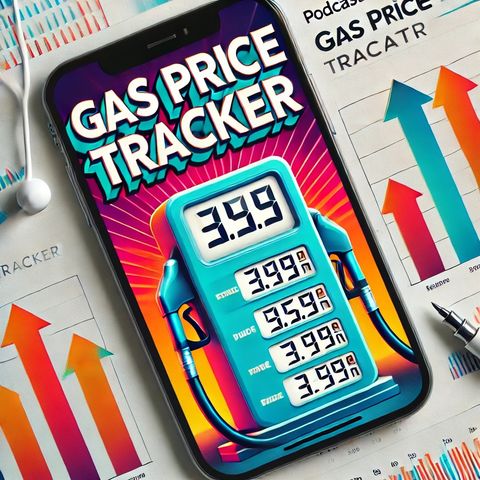Gas Prices Still Around $3.85 Nationally as Consumer Behavior, Inflation, OPEC, and Technology Impact Fuel Costs

Download and listen anywhere
Download your favorite episodes and enjoy them, wherever you are! Sign up or log in now to access offline listening.
Gas Prices Still Around $3.85 Nationally as Consumer Behavior, Inflation, OPEC, and Technology Impact Fuel Costs
This is an automatically generated transcript. Please note that complete accuracy is not guaranteed.
Description
As of October 30, 2024, gas prices in the United States continue to be a point of significant interest and concern for many listeners, impacting personal budgets and the broader...
show moreListeners may notice variation in prices due to taxes and supply logistics. California, known for its high fuel taxes and stringent environmental regulations, often reports prices well above the national average, with recent figures indicating prices around $4.80 per gallon. In contrast, states like Texas and Louisiana benefit from proximity to refineries and lower tax rates, offering prices as low as $3.25 per gallon.
Inflation and shifts in consumer behavior also play critical roles. As many switch to more fuel-efficient vehicles or consider electric alternatives, demand for gasoline has seen some shifts. Nonetheless, traditional gasoline remains a staple for millions.
International dynamics have a direct impact on gas prices, with OPEC's production levels being closely watched. Recently, OPEC's decisions to maintain steady production levels have provided some stability to the market. However, unforeseen geopolitical events or natural disasters can disrupt this balance, causing price volatility.
Technological advancements in extraction and refinement have improved efficiency in the oil production process, contributing to more stable supply. However, these advancements can also impact prices by increasing supply beyond current demand, sometimes leading to temporary price dips.
Environmental policies and initiatives promoting renewable energy sources contribute to longer-term influences on gasoline demand, potentially moderating future price increases. Government incentives for electric vehicles and infrastructure developments for renewables signal a gradual energy transition in the U.S., though the complete effects on gas prices will unfold over years.
Overall, while individual motorists might focus on weekly or monthly fluctuations at the pump, the broader picture encompasses a dynamic interplay of technological, economic, and geopolitical factors. These variables collectively shape the current and future landscape of gasoline prices in the United States. By considering these elements, listeners can better comprehend the intricate nature of gas pricing and its direct effect on everyday life.
Information
| Author | QP-5 |
| Organization | William Corbin |
| Website | - |
| Tags |
Copyright 2024 - Spreaker Inc. an iHeartMedia Company
